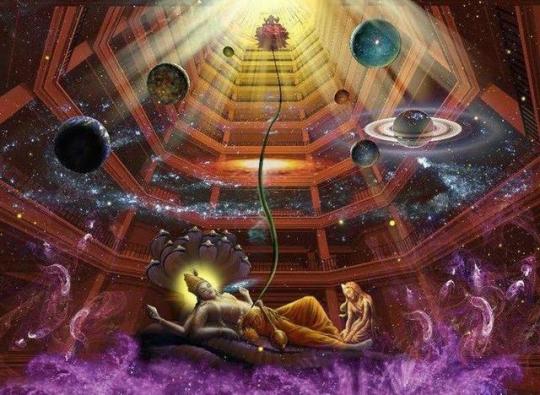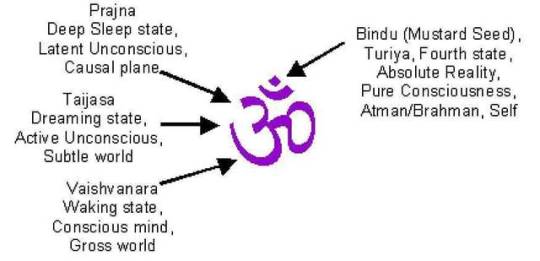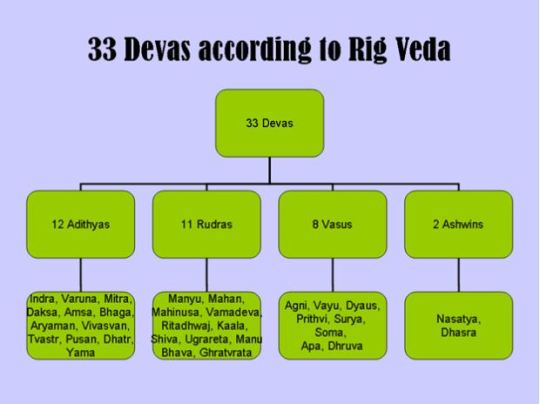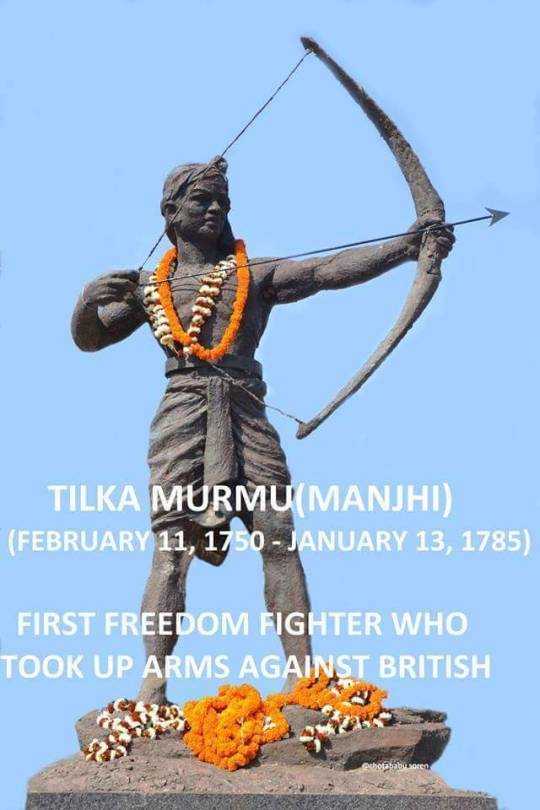Text

-Vitamin D is made by the body with sunlight.
-Sesame seeds( til) have the highest calcium (975mg per 100g). Milk has 125mg only.
-the body is capable of storing vitamin D up to a year, and use the reserves.
-lastly, the body is capable of getting its viatmin D reserves full with 3 full days of sunlight.
-the best quality of sunlight is end of winter & beginning of summer.
Now join the dots, and see how wise our sages were of ancient India. They created a festival of flying kites where by our kids get excited to go in the open, under direct sunlight, throughout the day starting from early morning. And their mothers feed them homemade TIL laddoos.
_* Happy Makara Sankratri*
7 notes
·
View notes
Photo

Hinduism must me the only religion which says the following after prayers/mangal in large gathering : " धर्म की जय हो, अधर्म का नाश हो, प्राणियों मे सद्भावना हो, विश्व का कल्याण हो--------!" Translation : ' Dharma should win , Adharma should lose , people of this world should leave peacefully , wishing welfare of whole world' Asking for peace an welfare of People in the world. Many times we also chant the following : "Bolo sache darbar ki Jay " " Bolo Bharat Mata ki Jai" Again , only religion which must be connected to the country so much that it is revered as a goddess 🙏🙏
38 notes
·
View notes
Photo

"The Hindu religion is the only one of the world’s great faiths dedicated to the idea that the Cosmos itself undergoes an immense, indeed an infinite, number of deaths and rebirths. It is the only religion in which the time scales correspond to those of modern scientific cosmology. Its cycles run from our ordinary day l night to a day and night of Brahma, 8.64 billion years long. Longer than the age of the Earth or the Sun and about half the time since the Big Bang." ~Carl Sagan
205 notes
·
View notes
Photo

"The Hindu religion is the only one of the world’s great faiths dedicated to the idea that the Cosmos itself undergoes an immense, indeed an infinite, number of deaths and rebirths. It is the only religion in which the time scales correspond to those of modern scientific cosmology. Its cycles run from our ordinary day l night to a day and night of Brahma, 8.64 billion years long. Longer than the age of the Earth or the Sun and about half the time since the Big Bang." ~Carl Sagan
28 notes
·
View notes
Photo

TURIYA or the Fourth State by Swami Sivananda TURIYA or the fourth state is that state in which the individual soul rests in his own Sat-Chit-Ananda Svarupa or the highest Brahmic consciousness during Nirvikalpa Samadhi. There are three states, Jagrat, Svapna and Sushupti, for a Jiva who is whirling in the mire of Samsara. Turiya is that state which transcends all these three states. Hence the Turiya or the fourth. Turiya is Atman or Brahman. Brahman is Sat-Chit-Ananda Vigraha or the embodiment of knowledge and bliss. He has no beginning or end. He is the cause of all causes. He is the shelter, support and the Lord for all. Languages are many but the language of heart and the mental pictures are one. Cows have many colours but the colour of the milk is one. Prophets are many but he essentials of their teachings are one and the same. Schools of philosophy are many but the goal is one. Opinions and methods of worship are many but the Brahman or God is one. There are two paths in Yoga to realise the Self viz., the Pipeelika Marga and the Vihanga Marga. Just as the ant slowly marches, so also the aspirant slowly marches on in the spiritual path. He practises Karma Yoga to purify his heart and then takes up Upasana to steady his mind. Finally he treads the path of Jnana Yoga and eventually reaches the goal of life. This is Pipeelika Marga or the ant-path. Just as the bird flies in the sky at once, so also the aspirant of the first class type at once practises Jnana Yoga and attains knowledge of the Self. This is the Vihanga Marga or the bird-path. Man can be compared to a plant. He grows and flourishes like a plant and dies at the end but not completely. The plant also grows, flourishes and dies at the end. It leaves behind the seed which produces a new plant. Man leaves when dying his Karma behind, the good and bad actions of his life. The physical body may die and disintegrate but the impressions of his actions do not die. He has to take birth again to enjoy the fruits of these actions. No life can be the first for it is the fruit of previous actions, nor the last, for its actions must be expiated in the next following life. Therefore, Samsara or phenomenal existence is without beginning and end. But there is no Samsara for a Jivanmukta or liberated sage who is resting in his own Sat-Chit-Ananda Svarupa. Man destroys the Samskaras which bring him again and again in this earth to reap the fruits of his actions by acquiring knowledge of the Self and becomes free. Have a deep study of the Upanishads. In the whole world there is no study so inspiring and so beneficial as that of the Upanishads. Every Mantra is pregnant with deep, original, sublime and soul-stirring thoughts. They are the products of the highest wisdom of the ancient Rishis of India. They bring solace, inner strength, peace and courage to the readers. They infuse hope to the hopeless, strength to the weak, joy to the joyless and serenity to the restless. The system of Vedanta takes its origin from the Upanishads which contain the ancient wisdom of the sages of yore. A deep study of these wonderful Upanishads will clearly indicate as to what magnanimous heights those Rishis of yore had climbed in the spiritual ladder. The Western scholars and philosophers pay their homage to the Rishis and appreciate the grandeur and originality of the Upanishads. Do not argue. Give up lingual warfare, intellectual gymnastics and quibbling. You will be nowhere if you enter into disputations and discussions. Have living faith or unshakable conviction in the existence of the immoral, All-pervading Brahman or the Eternal, the words of your preceptor and the Srutis. Learn from your preceptor the fundamental tenets of Advaita Vedanta. The Advaita Vedantin admits six Pramanas but the final court-of-appeal for him is the Srutis. Srutis contain the inspired revelations and experiences of realised sages. He always opens his Vedantic discourses in the following manner. Sruti Bhagavati says, Ekameva Advitiyam Brahma, Ekam Sat Viprah Bahudha Vadanti, Sarvam Khalvidam Brahma, etc. To understand and know the Truth, much logic and argumentation is not necessary. Truth is very simple. It can be realised by simple meditation. Intellect is a finite instrument only. It is an automatic and routine faculty. It is not self-sustained and self-luminous. It will betray you. Intuition only is infallible or unerring. Those aspirants who are well qualified and well equipped will be really benefited in the path of renunciation or Nivrittimarga. Many renounce the world and take to Sannyasa in their temporary zeal. They do not make progress in the spiritual path, because they lack the preparation and qualifications without which spiritual life is not possible. The man who sits by calming the mind, who does nothing at all physically, is the most active man in the whole world; whereas that man who runs hither and thither and who is always very busy, does nothing in substance. This may be paradoxical to you. Very few can comprehend this. Husk is natural to rice and rust to copper, yet they disappear through efforts! Evan so Ajnana which clings to the Jiva or individual soul can be made to disappear through the ceaseless Atmic enquiry. Destroy the Avidya. May you rest incomparably firm in your own Self! Do not mistake Tandri for Savikalpa Samadhi and deep-sleep for Nirvikalpa. The glory of the state of Turiya or Bhuma is ineffable. Its splendour is indescribable. If the body is light, if the mind is clear if there is cheerfulness, know that you are meditating. If the body is heavy, if the mind is dull, know that you were sleeping while meditating. Through ignorance and lust comes death. Through knowledge the deathless state or the immortal Atman is reached. Both life eternal and death abide in the body. Life is a lightning flash or breath. Time is but a thunder-clap of death. Live in Atman. You will attain immortality. Go beyond time. You will attain eternity. Withdraw the Indriyas. Meditate. Live in the Self. Your whole being will be uplifted into a kind of rapturous delight or mystic ecstasy. You will feel the divine thrill of joy. Wonderful peace will envelop you. You will be drowned in the ocean of bliss. All desires will melt into nothingness all names and forms will vanish. You will behold the Self only everywhere. This wonderful state is indescribable. You will have to feel it yourself. Just as the dumb man cannot express his feeling of joy when he tastes the sugar-candy, so also you cannot express the bliss of Samadhi or Union with the Supreme Self. Words are finite to describe this state. Language is imperfect to express this experience. It is the language of the supreme silence. It is the supreme stillness of the immortal soul. It is the peace that passeth all understanding. This is Turiya or the fourth state. May Turiya be your centre, ideal and goal!!
39 notes
·
View notes
Photo

In Hindu philosophy, turiya (Sanskrit: तुरीय, meaning "the fourth") or caturiya, chaturtha, is pure consciousness. Scientists described it as a hypo-metabolic state of "restful alertness." Turiya is the background that underlies and transcends the three common states of consciousness. The states of consciousness are: waking consciousness, dreaming, and dreamless sleep. It is the state beyond deep, dreamless sleep, in which the superconscious becomes overtly active. According to Swami Sivananda, turiya is the fourth state of consciousness in which the individual rests in Satchidanandam (“ever-existing, ever-conscious, ever-new bliss”). The individual has attained nirvikalpa samadhi or final liberation from ego consciousness and is united with infinite spirit. Turiya refers to both Atman, the individual self, and Brahman, the infinite self, representing their spiritual union. The individual soul realizes and transcends the three states of waking, dreaming, and deep sleep consciousness in turiya. He goes beyond the gross aspect of Brahman in the material world, the subtle aspect of Brahman in the dream world, and the causal aspect of infinite nature in deep sleep. He realizes his true nature as pure knowledge and bliss. Thus he is freed from desire, delusion, and duality in the external world. Turiya is not a state apart from the grosser states but pervades all levels of reality as superconsciousness. Ramana Maharshi interprets turiya as the natural state that permeates the other states, the only whole reality. The Mandukya Upanishad discusses turiya as pure consciousness, which is indescribable, incomprehensible, and unthinkable by the mind, but ultimately realized as the one true self. PS: Information has been collected from various sources and blogs
82 notes
·
View notes
Photo

Workers install a 3.5 tons Vishnu crown Garuda Wisnu Kencana (GWK) Park, Ungasan, Jimbaran, Bali, Indonesia. 20th May 2018: Workers install a Vishnu crown at Garuda Wisnu Kencana Park on Sunday. The gold-platted crown weighing 3.5 tons is the 529th module of the 121-meter statue, which is scheduled to be completed in August. (via Instagram: Made Gunarta) ----- Garuda Wisnu Kencana Cultural Park (Indonesian: Taman Budaya Garuda Wisnu Kencana) or GWK, is a cultural park located at Ungasan, Badung in the island of Bali, Indonesia about 10–15 minutes driving from Ngurah Rai International Airport. It is devoted to the Hindu God Vishnu, and his mount, Garuda, the mythical bird who became his companion. Planned to be established of a landmark or mascot of Bali, construction of the giant statue of Lord Vishnu who was riding his mount Garuda, as high as 120 meters is currently going on. https://en.m.wikipedia.org/wiki/Garuda_Wisnu_Kencana_Cultural_Park Please note Indonesia has largest Muslim population in the world. And then you have Indian bunch of seculars!
17 notes
·
View notes
Photo

The Vedas refer to not 33 KOTI(TYPE NOT CRORE) Devatas but 33 types (Koti in Sanskrit) of Devatas. They are explained in Shatpath Brahman and many other scriptures very clearly.
“Yasya Trayastrinshad Devaa Ange Sarve Samaahitaa, Skamma Tam Bruhi Katamah Swideva Sah”. ~(Atharva Veda 10-7-13)
Which means: with God’s influence, these thirty-three (supporting devta) sustain the world.
The word koti in 'trayastrimsati koti' does not mean the number '33 crore' or '330 million'. Here koti means 'supreme', pre-eminent, excellent, that is, the 33 'supreme' divinities.
In Brhadaranyaka Upanishad while discussing Brahman, Yajnavalkya is asked how many gods are there. He says that there are three hundred and three and three thousand and three gods. When the question is repeated? He says, thirty three. When the question is again repeated he says, six. Finally, after several repetitions he says ONE. (Chapter I, hymn 9, verse 1)
The number 33 comes from the number of Vedic gods explained by Yajnavalkya in Brhadaranyaka Upanishad – the eight Vasus, the eleven Rudras, the twelve Adityas, Indra and Prajapati. (Chapter I, hymn 9, verse 2)
They are: 8-Vasu, 11-Rudra, and 12-Aaditya, 1-Indra and 1-Prajaapati.
8. Vasus are: Earth, Water, Fire, Air, Ether, Moon, Sun, and Star. They are called Vasus, because they are abode of all that lives, moves or exists. (also mentioned in Mahabharat, 1/66/18)
11. Rudras: The ten Pranas (Praana, Apaana, Vyaana, Samaana, Udaana, Naag, Kurma, Krikal, Devadutta and Dhananjaya) i.e. nervauric forces which live in the human body. The eleventh is the human soul. These are called ‘Rudras’ because when they desert the body, it becomes dead and the relations of the deceased, consequently, begin to weep. Rudra means one who makes a person to weep. { also mentioned in Harivansha 13/51-52})
12. Adityaas —the twelve months of a year called Adityaas, they cause the lapse of the term of existence of each object or being. { also mentioned in Mahabharat 1/65/15-16})
1. Indra which is also known as the (all-pervading) electricity, as it is productive of great force.
1. Prajaapati , also called the “Yajna” because it benefits mankind by the purification of air, water, rain and vegetables and because it aids the development of various arts, and in it the honor is accorded to the learned and the wise.
The master of these 33 Devatas is the Mahadeva or Ishwar who alone is to be worshipped as per 14th Kanda of Shatpath Brahman.
---------------------------
PS : The information has been compiled from many sources/blogs.
30 notes
·
View notes
Video
Water fuelled car , wonderful!
19 notes
·
View notes
Video
Hampi; Archaeologists were puzzled when they failed to drain the pushkarini( the ritual stepped-tank) completely even after several days of pumping. How, they wondered, had such a large tank been fed, when there was no obvious water source at hand? Historical records showed that the ancient city did not use water from the nearby Tungabhadra River except for irrigation. Where, then, did it get its water?
51 notes
·
View notes
Photo

Nearly 350-year-old and has been rated a novelty by at least three shankracharyas who at varying intervals had visited its holy precints to pay their obesience to lord shiva, the presiding deity, whose temple stands atop the back of a frog, hence the name manduk or medhak mandir.
The architecture and the fact that the temple has been built on the back of a frog is in accordance with the rules of tantra. nowhere in india or the world can you find a temple on this pattern.Built at a height of about 100-ft from the ground-level, the temple is patterned on the design of a havan vedi. In the santum sanctorum ,a dark coloured shivling has been placed on a white marble argha. the water poured on the shivling finds its way out from the mouth of the frog.
Unlike other temples, the nandeshwar is a standing one, in accordance with principles of tantra. The boundary of this massive temple takes the countours of the laxmi yantra.
54 notes
·
View notes
Photo

Santal hero: Baba Tilka Majhi was first Santal leader who took up the arms against the British in the 1780's. The British surrounded the Tilapore forest from which he operated but he and his men held the enemy at bay for several weeks. When he was finally caught in 1784, he was tied to the tail of a horse and dragged all the way to the collector's residence at Bhgalpur. There, his lacerated body was hung from a Banyan tree. A statue to the heroic leader was erected at the spot after independence.
21 notes
·
View notes
Photo

GUPTA EMPIRE: THE GOLDEN AGE The Gupta Empire stretched across northern, central and parts of southern India between c. 320 and 550 CE. The period is noted for its achievements in the arts, architecture, sciences, religion, and philosophy. Kalidasa(Literature), Aryabhatta(Astronomy) , Dhanvantri(Medicine/Ayurveda) are the biggest names whose extraordinary achievements have dwarfed those of numerous other genuises of this time. Many higher educational institutions were set up during this time and even common masses were encouraged in all fields of learning. Mathura and Gandhara schools of Art also belong to this time.The finest examples of painting, sculpture and architecture of the period can be found in Ajanta, Ellora, Sarnath, Mathura, Anuradhapura and Sigiriya. Gupta kings knew that the well-being of the empire lie in maintaining a cordial relationship between the various communities. They were devoutVaishnava(Hindus who worship the Supreme Creator as Vishnu) themselves, yet that did not prevent them from being tolerant towards the believers of Buddhismand Jainism. Buddhist monasteries received liberal donations. So did the Jains , they flourished during this time. Due to these numerous achievements, peace and prosperity. Gupta Empire Time is referred to Golden Age of India.
17 notes
·
View notes
Photo

ICONIC NATARAJA STATUE In 2004, a 2m statue of the dancing Shiva was unveiled at CERN, the European Center for Research in Particle Physics in Geneva. The statue, symbolizing Shiva's cosmic dance of creation and destruction, was given to CERN by the Indian government to celebrate the research center's long association with India. A special plaque next to the Shiva statue explains the significance of the metaphor of Shiva's cosmic dance with quotations from Fritjof Capra( Tao of Physics) "Hundreds of years ago, Indian artists created visual images of dancing Shivas in a beautiful series of bronzes. In our time, physicists have used the most advanced technology to portray the patterns of the cosmic dance. The metaphor of the cosmic dance thus unifies ancient mythology, religious art and modern physics." Though named "Nataraja bronzes" in Western literature, the Chola Nataraja artworks are mostly in copper, and a few are in brass as well.
21 notes
·
View notes
Photo

Well done: @GoVigyanNagpur की सफलता । हासिल किया पेटेंट । गोमूत्र से कैंसर का प्रभावी इलाज । A patent for treating cancer with some medicinal properties of cow urine.
7 notes
·
View notes
Photo

DOWNFALL OF MAURYAN EMPIRE According to the historians, the sole cause behind the decline of the Mauryas after Ashoka was his weak successors. After Ashoka's demise, there was none among his heirs to equal the gigantic task of maintaining unity within the vast Empire. Moreover the successors of Ashoka had been reared in the tradition of non-violence and the policy of Dharma Vijaya. To them, aggressive imperialism initiated by Chandragupta Maurya was a dim idea. As a result they had neither will nor the strength to bridle the process of disruption within the Empire. None of Ashoka's successors except Dasharatha could really understand and implement the Dharma Vijaya policy inaugurated by the enigmatic man. The later Mauryas followed the policy of Dharma Vijaya only by forbidding any armed resistance against the invaders and internal revolutionaries. As a result the very foundation of the Mauryas was shattered. Finally when Brihadratha, the last king of Mauryan lineage was assassinated by his general Pushyamitra Shunga, Mauryan Empire came to a complete extinction. Broken into many pieces all over however Shunga Dynasty is said to be its successor. .
11 notes
·
View notes
